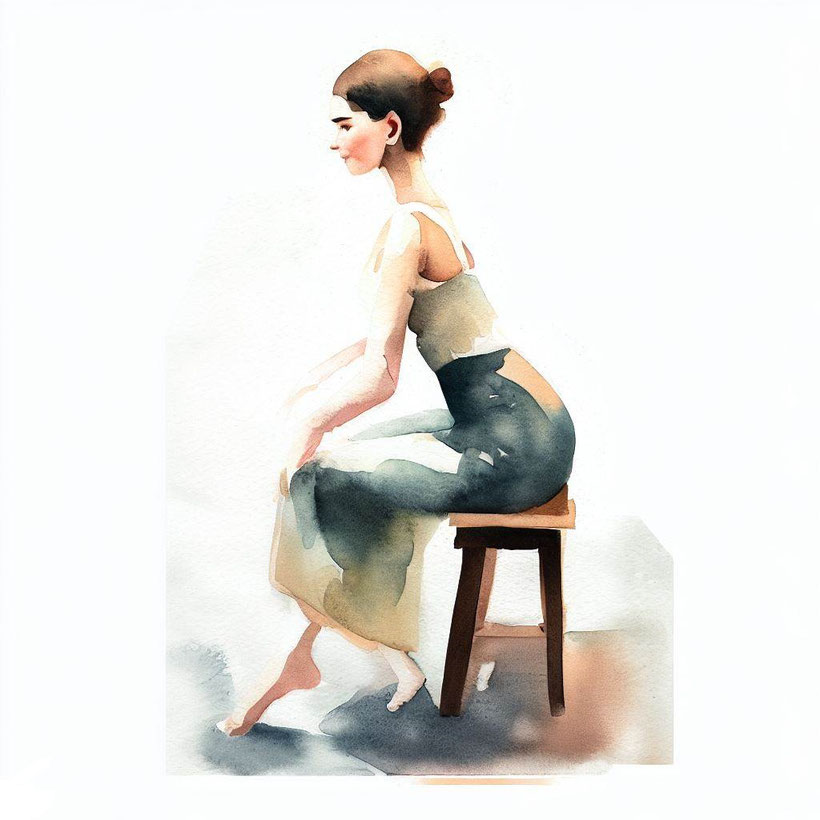What Is The Alexander Technique?
The Alexander Technique is fundamentally different to other therapies in that it's not strictly speaking a therapy at all. It's therapeutic benefits are well documented but what sets it apart is that it's truly educational. It essentially shows you how to stop hurting yourself with unconscious patterns of movement, and muscular and mental tension. You can think of it as a self care skill that puts you in the driving seat to actively take responsibility for your own health and well being. it also improves your performance in sporting activities, playing a musical instrument and other hobbies.
Embodied Mindfulness
The Alexander Technique is a practical form of embodied mindfulness, and this is something else that sets it apart from most other therapies. At it's core is the idea that the body and mind aren't simply connected (leaving them as separate entities still), but are part of a functional and indivisible whole, a psychophysical unity. A continuum rather than a connection. As such it's not just useful for dealing with physical pain but also how you react (and over-react!) to situations mentally/emotionally. It helps you to reduce your stress levels whilst maintaining your poise and improving posture. The Alexander Technique is less a technique to do correctly and more a tool of self discovery.
Using Yourself
The majority of musculoskeletal issues are down to the way we use ourselves. In fact, 100% of Repetitive Strain Injuries, by definition, are self inflicted injuries. It's not so much what you do, but how you do it, the quality you bring to the repetitive movement. And acclaimed spinal neurosurgeon Jack Stern MD thinks that 97% of all back pain sufferers can benefit from the Alexander Technique, helping them to change the way they use themselves. He recommends it for his own patients and uses it personally for himself to help with the rigours of having to bend over while performing long hours of surgery.
Old injuries are often hindered from fully healing due to the way we hold tension, and the protection mechanisms we put in place (i.e. tension) for an acute injury often turn into secondary issues later on when we habituate that tension pattern beyond it's initial useful period.
Exercises
There are no formal exercises, although it's common to encourage a lying down "exercise" called Constructive Rest. It's an exploration of how you respond to movement and situations, and how to become aware of habituated tension and prevent it. It allows you to become more you, without the unnecessary habits that get picked up along the way, allowing you to move more freely and efficiently. A skill for self development that can be applied to any activity whether that's sitting at your computer, running, gardening or picking up your kids and pushing the buggy.
Clinical Evidence
The Alexander Technique has been clinically proven for back pain with NHS funded gold standard randomised trials with the results published in the British Medical Journal, and is recommended by backcare.org.uk and Dentists Provident, the main health insurers for the dental profession in the UK.
In addition, the NHS (following NICE guidelines) and Parkinson's UK recommend the Alexander Technique as a management tool for dealing with the symptoms of Parkinson's and improving quality of life, balance, coordination and mobility.
Many multinational companies have also turned to it for help including Chanel, the BBC, Google, HM Treasury and the Cabinet office in Whitehall. In fact, Victorinox, the makers of Swiss Army Knives, managed to reduce absenteeism by 42% by employing Alexander teachers to help their staff. And over 20 NHS trusts and hospitals have also brought the benefits of the Alexander Technique to their own staff.
The Alexander Technique has become very popular in the world of performing arts over the years with devotees such as Madonna, Benedict Cumberbatch, Kevin Spacey, Paul McCartney, Sting, Keanu Reeves, Hugh Jackman, Victoria Beckham, Leonardo DiCaprio, Richard Gere, Dame Judi Dench, Pierce Brosnan and Hilary Swank for example. But it's so much more than a celebrity best kept secret, it is genuinely something for everyone, what ever your background.

